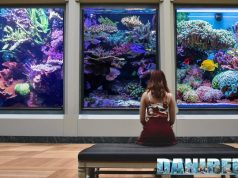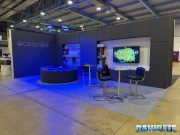
Finally we did it, and we’re excited to show the beautiful marine aquarium of Jonathan Betti. An aquarium of 600 liters that hosts very big corals: it resembles lagoonal environment but with acroporas.
This article is also available in: italiano
I met Jonathan back to April 2011 at MagnaRomagna. We became great friends, and his aquarium grew a lot since then, especially thanks to the Jonathan’s blue thumb and his huge passion. All MagnaRomagna’s friends only gave him a few technical suggestions, the very first bases, then Jonathan continued on his own obtaining wonderful results. His aquarium is amazing. You can understand its history and its growth, and especially if you ever have the luck to see it in person. We hope the video we made will return these sensations. His Acroporas are really big, and if sometimes they seem a little small it’s because they get lost in this huge aquarium.
Let’s begin right from the sizes. The aquarium contains about 600 liters, and is 150x80x50(h) with glass of 15 mm. Technically it articulates from the sump with filters, a zeolite reactor, a fluidized bed filter, the skimmer and a small refugium, the all implant is powered by only a one big pump that through a collector and its sinks manages to supply each filter, and when it’s summer it also controls the chiller. But I don’t want to get the attention that Jonathan deserves, so that he can describe the aquarium with his words.

The history of the aquarium
Hi Jonathan, do you want to tell the birth of your passion? How does it evolved and what choices did you make?
“My journey isn’t different from that of many others. I began in 2001 with a fresh water aquarium of few liters. I had fun but I didn’t grow the same passion I have for the marine aquarium. The sea brought me back to my childhood. I remember the Mediterranean aquarium we had in the living room: I stayed there for hours, watching while my father cleaned or introduced some new host. I saw a lot of species: gilthead breams, wrasses, sparidae, flounders, prowns, anemone and also seahorses and pipefish. It was the 80s or the early 90s and the most technological thing in the aquarium was a teco chiller that I still have.“.

“T8 tubes, undergravel filter, sump with sponges for the biological filter, uv-c lamp and no skimmer. But back at that time, no one had it. These were my basis, I was waiting for the right moment… So, at the age of 24, once I left my parents’ house I build my own Reef aquarium of 500 liters and more.“.

“I don’t have to tell you how many error I made. Then things have changed when I met DaniReef in 2011, and now here I am with my beloved shallow Reef 600 aquarium“.

Partial changes
Jonathan, let’s talk about your technique and the managing of the aquarium. Let’s begin with the partial changes (an argument that we’ve already dealt here – italian).
“The tank has three years, with 52 kg of living rocks and 30 kg of living sand, and for almost a year I changed the 10% every month but now it’s more than two years that I change the 20% every month. I’m supporter of this choice and I believe it really makes the difference when you breed SPS corals. I’d make even more changes but I find hard to be so costant“.

“I try different salts, I’m currently alterning Elos and Tropic Marin. The last I tried were Korallenzucht and Fauna Marin. I find hard to say if one’s better, no one gave me particular disadvantages or benefits. The importat is to keep salt of this level, I think“.

Filtering system and sump
Some months ago you improved your sump even more, would you like to explain what you did?
“Yes, I did. About six months ago I realized a new sump, more spacious and organized with the new filtering system. I was inspired by some system I saw oversea: I wanted to use only one, big electric pump that pulls water in a pvc collector that has different valves and drains connected to the filtering system and the chiller“.

“The sump is organized in this way: the first compartment is for the drain, the water is partially filtered by a roller filter and partially is free to run to the second compartment, the refugium of 40lt. There I placed 10 kg of living rocks coming directly from the main tank also with some sand. The refugium is though for the proliferation of those small animals that would be predated if they were in the tank and for not breed macroalgae that grow with difficulty even if they have their phytostimulating lamp. The photoperiod isn’t inverted because there aren’t macroalgae and I can’t use it for sustaining the pH, but following the same hour of the tank it can help to feed the corals because at night it is full of life. I can’t say for sure that this help is determinant, but I believe that anyway it contributes to the biodiversity of the whole system“.

“Then the water continues its ride spilling from a root in the technical compartment where there are also the skimmer, an UltraReef Typhoon UKD 200, the fluidized bed filter that I exclusively use for carbon, the calcium reactor with corallina jumbo, Calcium reactor Elos REA 120 Plus (review), and after a bulkhead of 20 cm (in order to keep stable the level of the skimmer) there are the return pump and Zeolite reactor that I shake two or three times a day“.





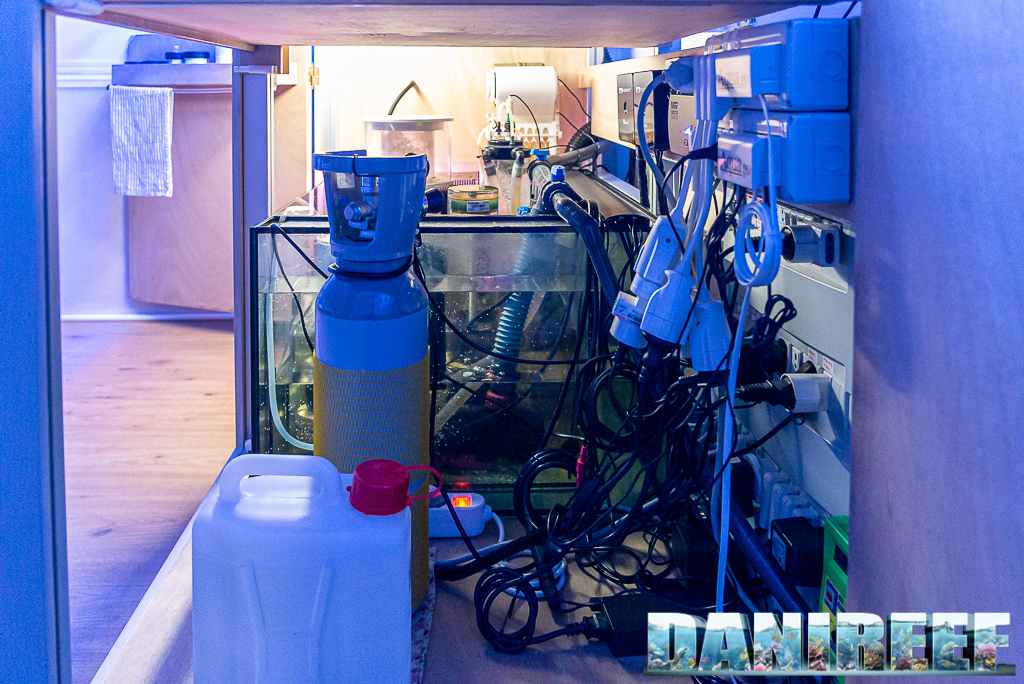
How do you supply this system?
“Here’s the best thing: the return pump, a Hydor Seltz D12000 (review of the model D6000), pulls the water directly in a collector designed for the new spaces in sump. The water follow two rides depending on the period of the year. Normally, when there’s not need of chiller, the water goes only on the left where first meets the deviation to the Zeolite reactor, then to the carbon filter and finally it comes back to the aquarium“.

“Always on this part there’s another exit that I only use when I have to change the water. Opening that valve and closing the one for the return in tank, I force the water to exit in sump, creating a turbulence. In this way, through a pump I suck the water for the change in the technical compartment, with all the dirt of the month. This process is very useful and I suggest to everyone who, like me, likes to keep the sump perfectly clean. The peculiarity of this valve system is that allows to adjust practically the flow of the filters as I want and when I want“.

“For example: once a day, I open the fluid bed filter to the maximum to thoroughly loosen the carbon and free it from the debris, or I keep a medium flow when I change the zeolite reactor and I gradually increase the flow week by week, given the reduction of its filtering capacity. During summer the right part of the collector goes to the terrace where there’s the chiller, then it returns in the tank externally“.


“The new chiller Teco TK1000 with the new chilling gas R290 is absolutely great, and thanks too this connection I can keep it in my terrace. It heatens up less than the previous model, but now I don’t have that noise in my house anymore. If you have the possibility, I largely recommend this“.

“I also adjust the power of the pump and the valves depending on the temperature and I also can decide the rate that goes to the chiller, that in the best scenario manages 700 liters per hour“.


“Finally, there’s a compartment for the osmosis of 50 liters. In winter I have to replace every week, I hoped it would last more but this water has a very high evaporation“.


The lighting based on 4 Orphek Atlantik V4
Jonathan, tell us about your lighting. As we can see from the pictures, you have a very powerful set.
“A critical point of my tank is exactly the lighting. I have always said that the real engine of an aquarium dedicated to SPS is its light. It cannot be lacking. And it has to cover the whole surface uniformely. Initially I started the tank with other ceiling lights but because of the dimensions (150x80x50(h)) not even 4 cluster ceiling light of 130 watt were sufficient. I had to add other 2 LED bars of 200 watt for the tank to have a significant growth and color. So it was about 700 watt.“
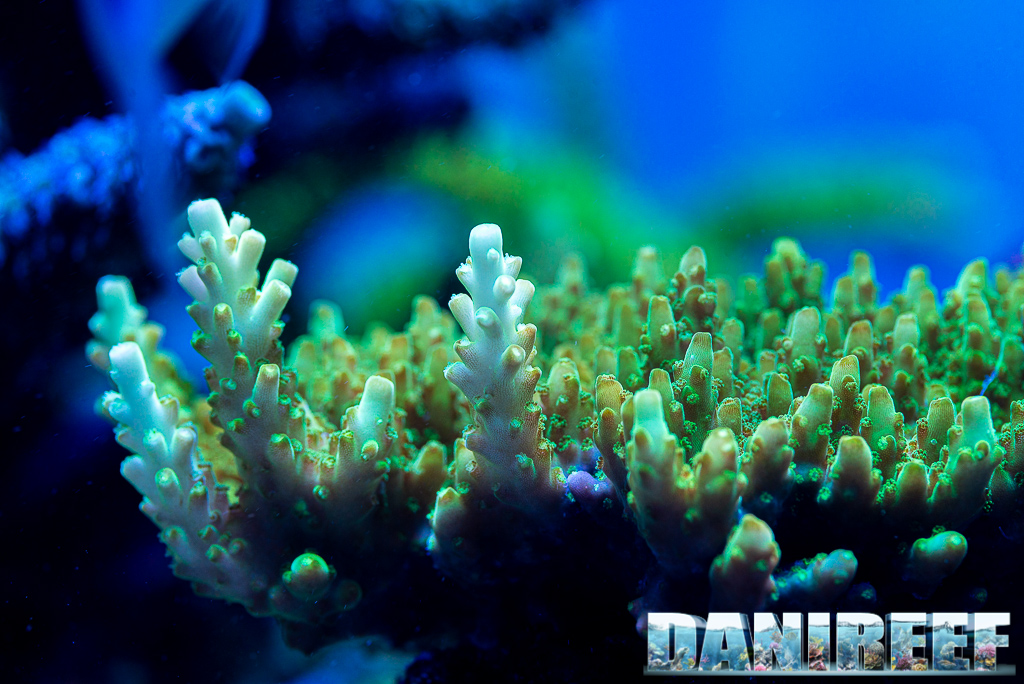
“But the real turning point was when I substitued the whole lighting with 4 brand new Orphek Atlantik v4 (review) that really brought the aquarium to a top level. I noticed real growth even for the Acroppora on the sand. Now they have been the lighting of my aquarium for 4 years and some of my corals grew so big that I had to do various restaylings“.
In the video you will see also the PAR measurement on each coral, that it has always been about 6-700 μmol m-2 s-1.
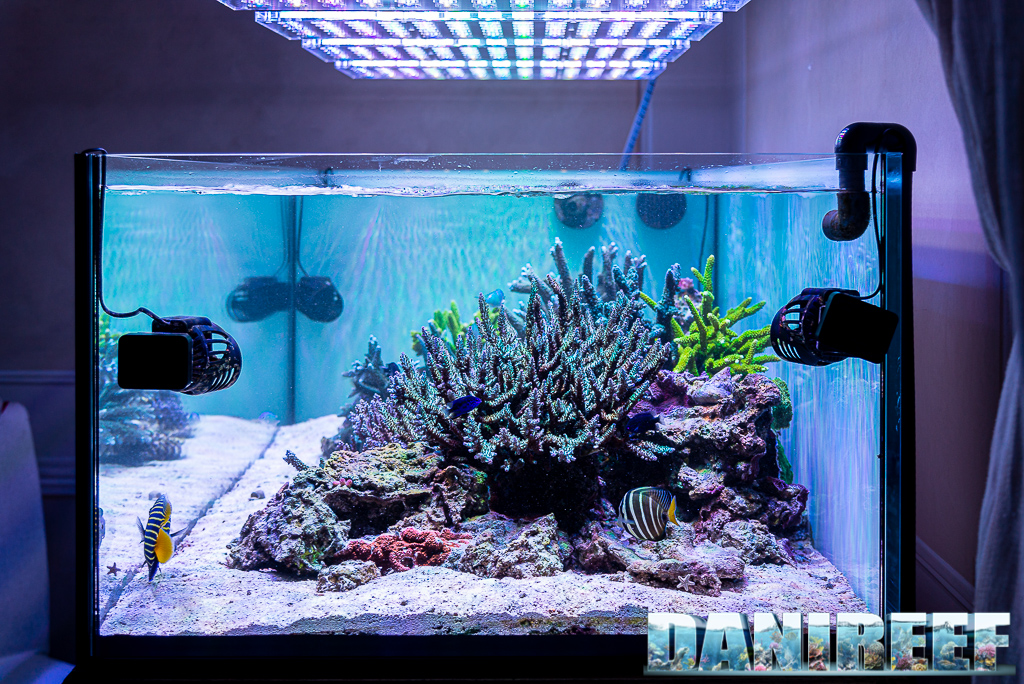
“I used this Orphek thoroughly, now it’s time to change again. You know me, I can’t stay without exploring for a long time. I like to keep my passion alive. I like to observe and understand the changings of everything that happens in the aquarium, so this time I chose a different ceiling light, in particular in the diffusion of light“.

The movement
Jonathan, we’re talking about the technique, but is still missing the movement, which is a fundamental topic.
“Yes, it’s fundamental. In particular in a very big tank with hard corals like this one. I’m actually using 4 pumps Rossmont Mover Mx 15.200 (review) each one with their own controller Rossmont Waver (review). As their names say they’re pump of 15.200 l/h. They’re placed in the corners, each one pointing to the opposite corner with different presets in order to differentiate the flow as much as possible. I always control that the surface is strongly moved, it helps the exchange of gas and the removing of the film on the surface and, well, it creates that reverberation that I love“.

The technological maintenance
Jonathan, I know that for a while now I’ve been making you want to automatize your aquarium as much as possible, while you’ve started your aquarium keeping it extremely manual. What are you using right now and how do you feel?
“After I’ve read here on DaniReef the existence of Aqua GO and after having seen it in action at the PetsFestival 2019 I finally decided to buy it. This is my first computer for aquarium, until some months ago I didn’t even manage the temperature with a thermostat. It was a huge step to make“.

“After the first uncertainties I’ve finally become familiar with the system, I set Aqua Go in each particular: from the temperature, to the pH of the reactor, the levels, the skimmers. There are many logical set linked to the various utilities and it has alerts for every kind. It’s very well done“.




Jonathan’s goals
Jonathan, which goals did you have for you aquarium and you would say you were successful?
“One thing has been clear from the start: trying to breed “enormous” corals, at least for the dimensions of a domestic aquarium like mine. I’m crazy for them, I find them more natural and the tank seems wilder, not a collection of small corals. I’d like them to reach 50 cm of diameter and since an Acropora Stagorn is already of 43 cm, the goal is near“.

“I was inspired by a lagoonal view, so when I set it I planned a rock cliff with small big and flat pieces placed in order to leave more space to the Acropora. I added the sand from the start and it didn’t give me particular problems. I didn’t like tanks too tidy, without a grain of sand in the wrong place… In truth, I actually let some acropora grow placed on the sand“.

Final thanks
At the end of this journey, and before your due thanks, the video and the pictures of your amazing animals, do you want to thank someone in particular?
“In first place I’d like to thank my wife Gloria, because without her support none of this could have been possible (know that I also have another little Mediterranean aquarium… I’m very lucky).

“Then my thanks are for you, Danilo, because you’ve been a precious teacher, guiding me sharing everything you knew, and it has been fundamental for my journey, but I’m more glad that I’ve become your friend!“

“I also want to thank the staff of Hobby Acquari of Bologna (my beloved blue Acropora hoeksemai comes from their shop), some time has passed but it’s always a pleasure to visit them. A big thanks also to the friends of Magnaromagna with whom I always spend good evenings among Reef lovers“.

DaniReef’s comment
We have to make the biggest compliments to Jonathan. How can we add anything after these words? His aquarium is amazing. Maybe the pictures can’t return the beauty of the tank, but I hope you will appreciate the video (don’t forget to subscribe to our YouTube channel!). Jonathan’s aquarium is a dream. The animals are big and beautiful and the environment really resembles a lagoon. The fish are calm and healthy. Everything is really harmonious. Sometimes I wish I had his perseverance and his ability of reading the life in his tank.

Technically speaking the aquarium is flawless. The movement of the pumps is of 15.200 liters per 4, that is 30.400 l/h alternating in 600 liters of the tank. Obviously the movement is various but this is a simplification. We’re speaking of a movement of 50 times the volume!

The return pump has a measured exchange of 1.530 l/h and a skimmer with a flow rate, also measured, of 2.382 l/h.

The lighting is incredible, maybe even too much, the reflection is perfect and it has a value of 6-700 PAR uniform all over the aquarium.

Now you have to browse the other pages (click here) to see the pictures of the corals, the fish and the video.







